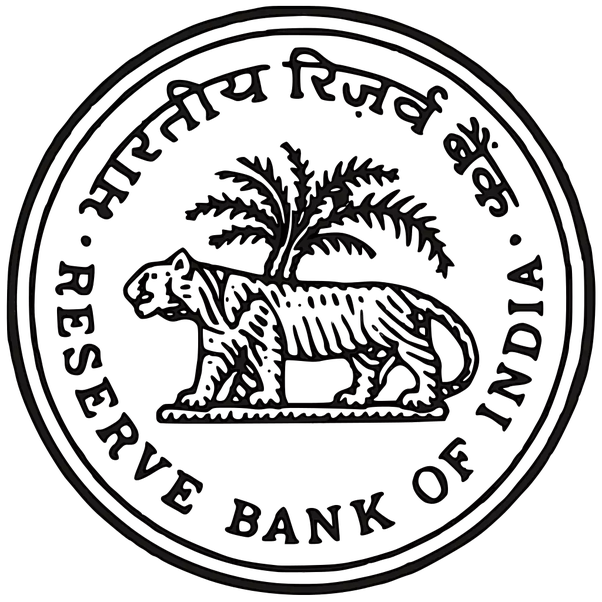Master Circular – Credit facilities to Scheduled Castes (SCs) & Scheduled Tribes (STs)
The Reserve Bank of India has, from time to time, issued a number of guidelines/instructions to banks on credit facilities to Scheduled Castes (SCs) & Scheduled Tribes (STs). The enclosed Master Circular consolidates the circulars issued by Reserve Bank on the subject till date, as listed in the Appendix.
Master Circular – Credit Facilities to Scheduled Castes (SCs) & Scheduled Tribes (STs)
Banks should take the measures indicated below to step up their advances to SCs/STs.
1. Planning Process
1.1 The District Level Consultative Committees formed under the Lead Bank Scheme should continue to be the principal mechanism of co-ordination between banks and development agencies in this regard. The district credit plans formulated by the lead banks should clearly indicate the linkage of credit with employment and development schemes.
1.2 Banks will have to establish closer liaison with the District Industries Centres, which have been set up in different districts for promoting self-employment.
1.3 At the block level, a certain weightage is to be given to SCs/STs in the planning process. Accordingly, the credit planning should be weighted in their favour and special bankable schemes suited to them should be drawn up to ensure their participation and larger flow of credit to them for self-employment. It will be necessary for the banks to consider their loan proposals with utmost sympathy and understanding.
1.4 Banks should periodically review their lending procedures and policies to see that loans are sanctioned in time, are adequate and production-oriented and that they generate incremental income to make them self-liquidating.
1.5 While ‘adopting’ villages for intensive lending, villages with sizeable population of SC/ST communities may be specially chosen. Alternatively, specific localities (bastis) in the concerned villages which have a concentration of these communities could also be adopted.
2. Role of Banks
2.1 Bank staff may help the borrowers in filling up the forms and completing other formalities so that they are able to get credit facility within a stipulated period from the date of receipt of applications.
2.2 In order to encourage SC/ST borrowers to take advantage of credit facilities, greater awareness among them about various schemes formulated by banks needs to be created through various means such as brochures, visits by field staff etc so that salient features of the schemes, as also the advantages that will accrue to them are known to such borrowers. Banks should advise their branches to organize meetings more frequently exclusively for SC/ST beneficiaries to understand their credit needs and to incorporate the same in the credit plan.
2.3 Circulars issued by RBI/NABARD should be circulated among the staff for compliance.
2.4 Banks should not insist on deposits while considering loan applications under Government sponsored poverty alleviation schemes/self-employment programmes from borrowers belonging to SCs/STs. It should also be ensured that applicable subsidy is not held back while releasing the loan component till the full repayment of bank dues. Non-release of subsidy upfront amounts to under-financing and hampers asset creation/income generation.
2.5 The National Scheduled Tribes Finance & Development Corporation and National Scheduled Castes Finance & Development Corporation have been set up under the administrative control of Ministry of Tribal Affairs and Ministry of Social Justice & Empowerment, respectively. Banks should advise their branches/controlling offices to render all the necessary institutional support to enable these institutions to achieve the desired objectives.
2.6. Loans sanctioned to State Sponsored Organisations for Scheduled Castes/ Scheduled Tribes for the specific purpose of purchase and supply of inputs and/or the marketing of the outputs of the beneficiaries of these organisations are eligible for priority sector classification.
2.7 Rejection of SC/STs’ loan applications under government programmes should be done at the next higher level instead of at the branch level and reasons of rejection should be clearly indicated.
3. Role of SC/ST Development Corporations
The Government of India has advised all State Governments that the Scheduled Caste/Scheduled Tribes Development Corporations can consider bankable schemes/proposals for bank finance.
4. Reservations for SC/ST beneficiaries under major Centrally Sponsored Schemes.
There are several major centrally sponsored schemes under which credit is provided by banks and subsidy is received through Government Agencies. Credit flow under these schemes is monitored by RBI. Under each of these, there is a significant reservation/relaxation for the members of the SC/ST communities.
4.1 Deendayal Antyodaya Yojana – National Rural Livelihoods Mission (DAY-NRLM)
DAY-NRLM (previously known as NRLM) was launched by the Ministry of Rural Development, Government of India by restructuring the erstwhile Swarnajayanti Gram Swarozgar Yojana, effective from April 1, 2013. DAY-NRLM would ensure adequate coverage of vulnerable sections of the society such that 50% of these beneficiaries are SC/STs. Details of the scheme are available in the Master Circular on DAY-NRLM as updated from time to time.
4.2 Deendayal Antyodaya Yojana – National Urban Livelihoods Mission (DAY-NULM)
The Ministry of Housing and Urban Affairs (MoHUA), Government of India, launched the DAY-NULM (previously known as NULM) by restructuring the erstwhile Swarna Jayanti Shahari Rozgar Yojana (SJSRY), effective from September 24, 2013. Under DAY-NULM, advances should be extended to SCs/STs to the extent of their strength in the local population. Details of the scheme are available in the Master Circular on DAY-NULM as updated from time to time.
4.3 Differential Rate of Interest (DRI) Scheme
Under the DRI Scheme, banks provide finance up to ₹15,000/- at a concessional rate of interest of 4 per cent per annum to the weaker sections of the community for engaging in productive and gainful activities. In order to ensure that persons belonging to SCs/STs also derive adequate benefit under the DRI Scheme, banks have been advised to grant eligible borrowers belonging to SCs/STs such advances to the extent of not less than 2/5th (40 percent) of total DRI advances. Further, the eligibility criteria under DRI, viz. size of land holding should not exceed 1 acre of irrigated land and 2.5 acres of unirrigated land, are not applicable to SCs/STs. Members of SCs/STs satisfying the income criteria of the scheme can also avail of housing loan up to ₹20,000/- per beneficiary over and above the individual loan of ₹15,000/- available under the scheme.
5. Credit Enhancement Guarantee Scheme for Scheduled Castes (CEGSSC)
The CEGSSC was launched by Ministry of Social Justice & Empowerment on May 6, 2015 with the objective of promoting entrepreneurship amongst the Scheduled Castes (SCs), by providing credit enhancement guarantee to Member Lending Institutions (MLIs), which extend financial assistance to these entrepreneurs. IFCI Ltd. has been designated as the Nodal Agency under the scheme, to issue the guarantee cover in favour of MLIs for financing SC entrepreneurs.
Individual SC entrepreneurs/Registered Companies and Societies/Registered Partnership Firms/Sole Proprietorship firms having more than 51% shareholding and management control for the previous 6 months by SC entrepreneurs/ promoters/ members are eligible for guarantee from IFCI Ltd. against the loans extended by MLIs.
The amount of guarantee cover under CEGSSC ranges from a minimum of ₹0.15 cr to a maximum of ₹5.00 cr.
The tenure of guarantee is up to a maximum of 7 years or repayment period, whichever is earlier.
6. Monitoring and Review
6.1 A special cell should be set up at the Head Office of banks for monitoring the flow of credit to SC/ST beneficiaries. Apart from ensuring the implementation of the RBI guidelines, the cell would also be responsible for collection of relevant information/data from the branches, consolidation thereof and submission of the requisite returns to RBI and Government.
6.2 The Head Office of banks should periodically review the credit extended to SCs/STs on the basis of returns and other data received from the branches. Any major gap or variation in credit flow to SCs/STs on a year to year basis should be reported to the Board as part of the review on the theme of “Financial Inclusion” in term of circular DBR No.BC.93/29.67.001/2014-15 dated May 14, 2015.
6.3 Banks should review the measures taken to enhance the flow of credit to SC/ST borrowers on a quarterly basis. The review should also consider the progress made in lending to these communities directly or through the State Level Scheduled Caste/Scheduled Tribe Corporations for various purposes based, amongst others, on field visits of the senior officers from the Head Office/Controlling Offices.
6.4 SLBC Convenor bank should invite the representative of National Commission for SCs/STs to attend SLBC meetings. Besides, the Convenor bank may also invite representatives from the National Scheduled Castes and Scheduled Tribes Finance and Development Corporation (NSFDC) and State Scheduled Castes and Scheduled Tribes Finance and Development Corporation (SCDC) to attend SLBC meetings.
7. Reporting Requirements
Data on advances to SCs and STs should be reported as prescribed in the Master Direction on Priority Sector Lending as updated from time to time, within the time frames stipulated.
Read More on RBI

